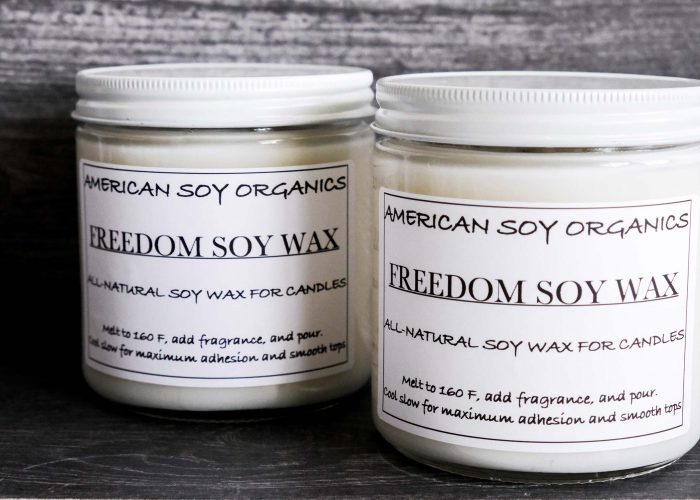Soy Wax and Paraffin Wax: What’s the Rub?
The general concept of making candles is quite simple. Melt wax, add fragrance, add color, and pour into your wicked jar. Viola! You’ve got a candle!
Anyone who’s actually made a candle knows that it isn’t quite that easy. The wax you use and the process you create will, however, determine just how easy it will be to create that perfect candle masterpiece.
In today’s candle market, there are two main players in the wax ring: soy wax and paraffin wax. While there are very good reasons to use either in your candle-making, it’s worth breaking down some of the benefits, and drawbacks, of each.

Paraffin Wax
Paraffin wax has been a staple in the candle industry since its invention in 1830, where it began replacing whale oil and tallow as the preferred choice for a candle- and lamp-light.
A by-product of crude-oil production, paraffin waxes are generally versatile, hold color well, hold fragrance well, and are very predictable as wax for candles. Because they tend to solidify quickly upon reaching their freezing point, jars typically need to be warmed prior to filling.
Paraffin is typically a very flexible wax and generally requires a top-off or heating the top of the jar to level out shrinking as the wax cools. Paraffin tends to pull away from the sidewall of your container.

Soy Wax
Soy wax is a renewable wax made from the oil in soybeans. As an all-natural product, they can be more difficult to work with. They typically don’t hold color and fragrance as well as paraffin. Jars do not need to be preheated as the freezing point of soy is much lower than its melting point, which opens a larger window of opportunity for a candle maker for pouring a candle and getting good sidewall adhesion of the wax to the jar.
Soy wax is less flexible than paraffin and tends to crack or produce voids in the candle if not poured at the optimum temperature. Poured at the right temperature, soy wax can be a wonderful single-pour wax.
Candle consumers see added value in soy wax candles, so while paraffin candles can generally be produced much faster, the candle-maker with the patience to use an all-soy recipe will tend to reap the reward of higher profits per piece.
For many candle-makers, the challenge of trying to find the consistency of paraffin with the simple, natural characteristics of soy leads them to one simple answer: use both.
Why not maintain the color and fragrance-holding capacity of paraffin while tapping into the natural characteristics of renewable soybean wax?
Most candle companies are now doing this, and with no specific regulations on how much soy is required to label your product a “soy blend,” you are more easily able to take advantage of the added value of soy in your packaging and marketing materials while knowing that your candle is a cleaner-burning candle than your all-paraffin competitors.
In a Nutshell
We recommend an all-soy or a soy-paraffin blend over a straight paraffin wax. Both can give you great results with a much cleaner, healthier burn than the conventional paraffin candles found on the shelves of many low-end stores. At the end of the day, the right choice is the one that matches the brand you’ve created.

